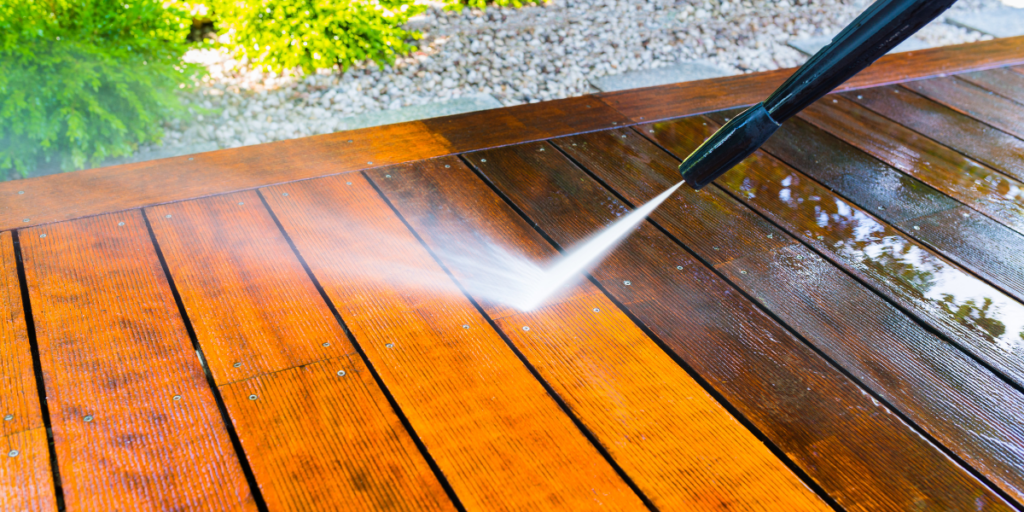Take advantage of getting your house ready for autumn while the days are still warm!
The official start to fall is about a month away, so now is a great time for some end-of-summer cleaning. Truth be told, some of these chores are downright dirty deeds. But, they make a big difference when they’re done. And it’s wonderful being outside, so a couple of days of scrubbing away the summer grime can be very therapeutic.
Tackling this late summer to-do list gives you a clean slate as we head into cooler weather and the holiday season, which has a madness all its own. Do the chores now and you’ll have time to enjoy the results before we start spending more time indoors.
Our eight recommendations for end-of-summer cleaning include:
1. Outdoor furniture
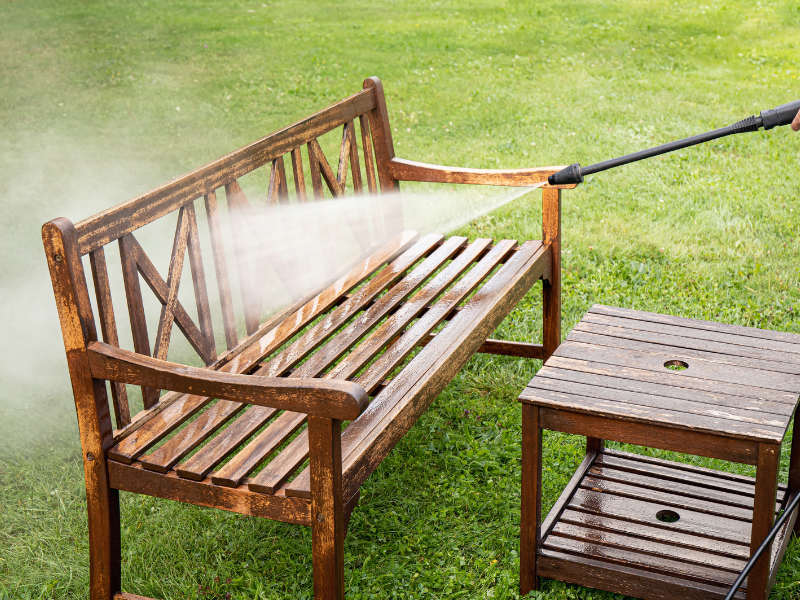
Lawn and garden furniture naturally gets dirty. Most types benefit from a regular wipe down with warm, soapy water, followed by a rinse. Different kinds of furniture and materials, however, can require different approaches. And the level of buildup may require more effort.
At our place, we have all-weather wicker, which is really resin. We spray it down with a hose during the season to remove dirt and debris, and we use an old toothbrush to clean gunk out of the weave when needed. It gets a soapy water wash at the beginning and end of the season, and we store it during the winter.
For a details on cleaning all types of outdoor furniture, check out this article from HGTV.
2. Exterior doors
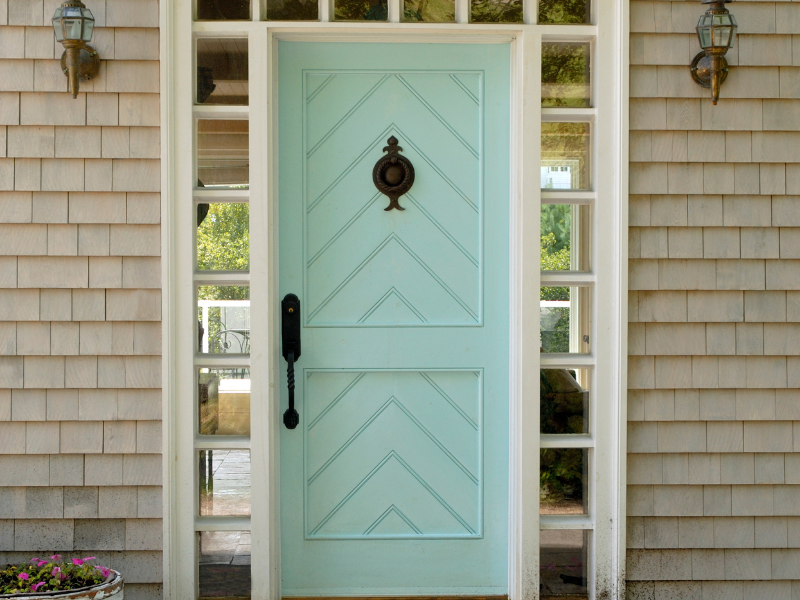
It’s amazing to me how dirty exterior doors and storm doors can get. I have to clean mine regularly throughout the year, but especially during the warmer months. Our dogs love to press their noses up again the storm doors and slide them around on the glass. It’s a dog thing.
Mix a bucket of warm soapy water and give those doors a good cleaning. If your doors have lots of buildup from dirt and pollen, wipe them down with plain water first to remove the loose debris. Or you could spray them with a hose or even a pressure washer. Then proceed to wash with soapy water. Wipe the doors again with a dry microfiber cloth if needed to remove excess moisture.
For glass storm doors, add some vinegar to the mix. It helps cut through any oily residue, so your glass is spotless. Dry with a squeegee, microfiber cloth, or crumpled up newspaper for a streak-free finish.
3. Siding, patios & porches
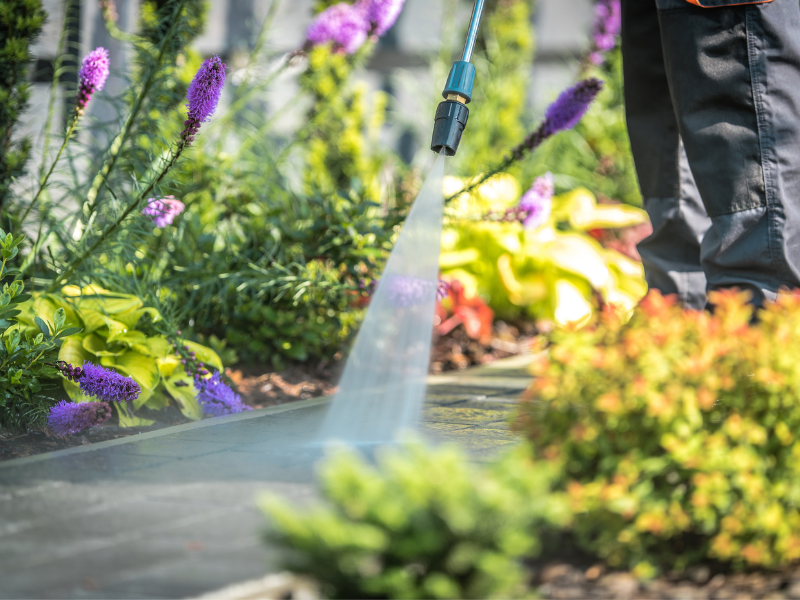
The outsides of our houses need a bath once in a while. For siding, the frequency depends on your climate and how much dirt. debris, mold, and mildew is accumulating throughout the year. Some homes need an annual power washing. You can rent or buy a pressure washer for the job, or call in a professional to handle it for you.
Others can get by with spot cleaning for several years before going all in on the entire place. If things are looking really cruddy, plan to wash the whole house. If only certain portions appear dirty, focusing on those areas is just fine.
Patios, porches, and walkways, on the other hand, should be washed down at the end of every summer. The foot traffic alone guarantees they’re getting dirtier by the day. Banish the buildup by using a pressure washer or a DIY approach.
To DIY it, first rinse the area with water using a hose and spray nozzle. Then, using a scrub brush with an attached handle, scrub the surface with warm soapy water to remove the remaining dirt. Rinse again with the hose and let dry.
4. Windows

There’s nothing like a sparkling clean window to help usher in a new season. If yours are anything like mine, by the end of summer, they need a good washing. Summer rain combined with dirt, lawn mowing, and other junk blown around by the wind gets stuck on windows making them dirty quick.
Grab that bucket of warm soapy water mixed with white vinegar and start scrubbing. Wash, then squeegee or dry with a microfiber cloth or crumpled up newspaper. Check for any stubborn spots that may need a second scrub. And don’t forget to clean inside, too!
5. Trash cans & recycling bins
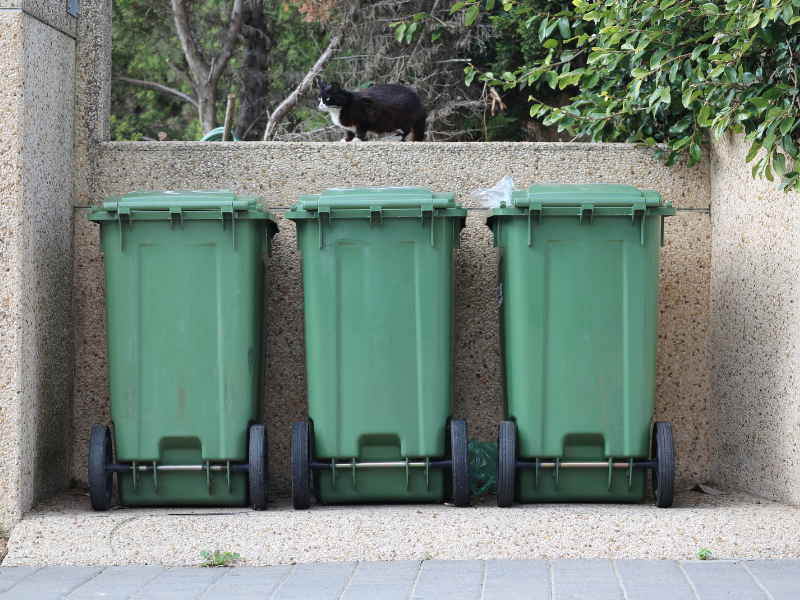
One of my least favorite jobs, indoor waste baskets, outside trash cans, and recycling bins all need to be washed and sanitized. They just get nasty – there’s no way around it, folks. Our favorite warm soapy water and vinegar mixture works great for stinky bins.
If you have galvanized outdoor cans, hose them out with a strong burst from your hose and sprayer attachment, or hit them with a pressure washer. If they’re especially ripe, scour them with a scrub brush and soapy water. A little of that magical white vinegar mixed in will help to eliminate odors, but be sure to rinse it out really well to avoid rust. Turn them upside down to drip dry.
6. Exterior light fixtures
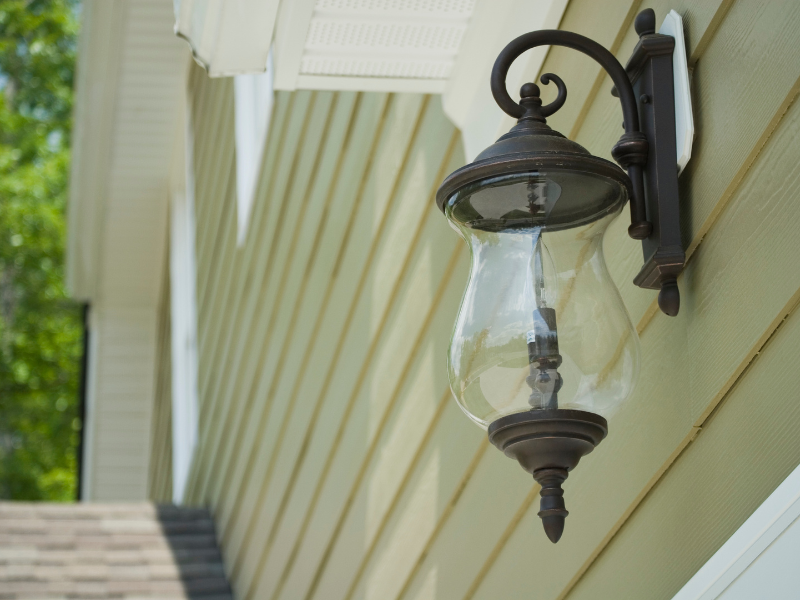
Harbingers of cobwebs, dead bugs, and dirt, exterior light fixtures take on a dull appearance when dirty. Grab a ladder and remove shades where possible. Taking them down for cleaning is safer than teetering on a ladder and it allows for a better inspection of the overall condition.
Wipe stationary fixtures with a damp microfiber cloth to remove dirt and debris. Wash glass shades in warm, soapy water mixed with vinegar. Eliminate the vinegar when washing metal shades. Rinse well and dry before replacing. This is a great time to replace burned out bulbs, too.
7. Air ducts

Air conditioners all over the country have been cranking this summer, which means our air filters have been hard at work. If you’re good about changing your filters regularly, you’ve probably avoided significant buildup in your air ducts. But the ducts still need to be inspected before fall and the heating season.
If your air vents are covered in dust and dirt, that’s a sign your ducts need cleaning. Also, if there’s a musty odor coming from your vents when turn the air on, that’s another sign of buildup in the duct work. Since we breathe this air, it’s important it’s a clean as possible. This is especially important in fall and winter when our windows are closed up and we’re not allowing as much fresh air to circulate through the house.
At a minimum, change your filters and clean your vent registers. It is possible to DIY your air duct cleaning. It won’t be as thorough as the professionals, but it can help quite a bit and save some money. If you do need to call in a pro, expect costs to range in the neighborhood of $500 – $2,000 – more if your place is large or the ducting is complex.
8. Chimneys
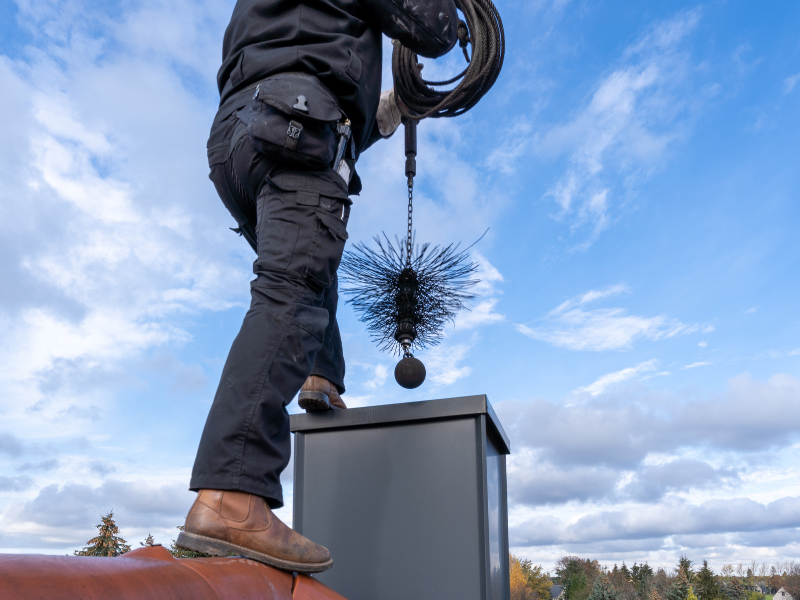
Cleaning the chimney is one of the most important end-of-summer chores you can do, especially if you use your fireplace frequently. We use ours, which is wood-burning, from fall through spring, so it gets a workout. And although we only use very dry hardwoods for our fires, we know we’re going to get soot and creosote buildup, which can cause chimney fires. An annual sweeping of the chimney is a safety ritual in our house, along with ongoing cleaning of the firebox due to the high use.
A general guideline for most homeowners is to sweep your chimney and clean the firebox at least annually. This goes for gas fireplaces, too. While creosote isn’t an issue for gas burners, debris and nesting material from animals can still clog chimneys. Sweeping your chimney, or having it done professionally, also allows for the chimney to be inspected for leaks and other potential issues. Catching these early can save big bucks and lots of frustration.
For potential DIY chimney sweepers, note that this is a very messy and sometimes dangerous job. Unless you have a solid understanding of chimneys and the right equipment, it’s best to call in the pros for this job.
According to Forbes, the average cost to have your chimney swept is $250, though prices can vary widely based on the chimney type, condition, and accessibility.
